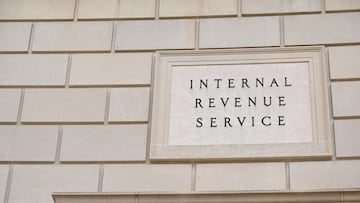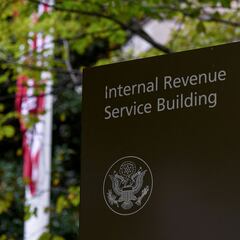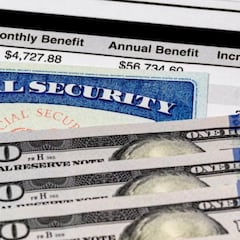Tax deadline 2023: how do I know my tax bracket?
There have been slight changes to the tax brackets many will be sorted into as they file a refund with the IRS this month.


In November last year, the IRS released revised tax brackets for 2023 that adjust the rates for inflation. However, those will not impact taxpayers who are still working to get their return submitted by the 18 April deadline.
Your employer will have reported your annual gross income to the IRS, which can be found on your W-2, which can help one identify their tax bracket.
In 2019, 53 million workers paid 12% of their incomes to the IRS, representing the largest tax bracket. The smallest bracket was the 37% group, of which only around 871,748 returns were received.
However, in the same year, the largest number of returns, 22 million, was received by those between an income of $50,000 and $75,000. Closely behind this group were those making between $100,000 and $200,000 a year, of which twenty-one million returns were submitted to the IRS.
How many tax returns are typically processed each year?
In 2020, the IRS processed over 240 million returns and collected about $3.5 trillion in federal income taxes. This represented a decrease from the 253 million that were submitted in 2019. However, the number of returns submitted electronically did increase from 184 million to 194 million, after a major communications push from the IRS.
White House proposes higher tax rates for top earners
In recent years, various outlets, like ProPublica, have done deep dives into the US tax system and found dramatic inequalities.
Some of the top earners are able to claim tax credits and other benefits that bring their total tax bill down to the point that they receive a refund from the federal government. In 2019, the top ten percent of earners, around fourteen million taxpayers, paid around nineteen percent of their incomes to the IRS.
In late March, the Biden administration released their proposed budget for the next fiscal year and it includes tax increases that would boost the tax rate for these individuals.
“In 2021 alone, America’s more than 700 billionaires saw their wealth increase by $1 trillion, yet in a typical year, billionaires like these would pay just 8 percent of their total realized and unrealized income in taxes. A firefighter or teacher can pay double that tax rate,” read a statement from the White House.
What is an 'unrealized gain or appreciation'?
An unrealized gain can be defined as the value of an asset held by an individual or company that has yet to be sold.
The President, a self-proclaimed capitalist, does not believe that the government should limit the amount of money people can earn. He does, however, find it troubling that some of the wealthiest people in the US pay less in taxes than working-class families as a share of income.
The proposal targets “unrealized gains” which would make the US tax code far more fair as it would go after wealth rather than income. The wealth held by millionaires and billionaires does not typically come from their income, but rather their assets. The White House has said that “The Billionaire Minimum Income Tax will ensure that the very wealthiest Americans pay a tax rate of at least 20 percent on their full income, including unrealized appreciation.”
This would ensure that if the stock price or value of other asset held by a top earner, the IRS would be able to tax that increase. This is a way of taxing the assets of wealthy individuals while not subjecting low and middle-class workers to increased taxation.
Related stories
The likelihood of this change to the code being taken up by Congress is small.
Lobbyist hired by the top one percent of owners have worked hard to increase the reliance of many politicians on their money and many leaders are unwilling to vote against the interests of these donors. A tragic reminder of the structural reforms needed to close gaps in wealth that have grown even wider over the last two years.

